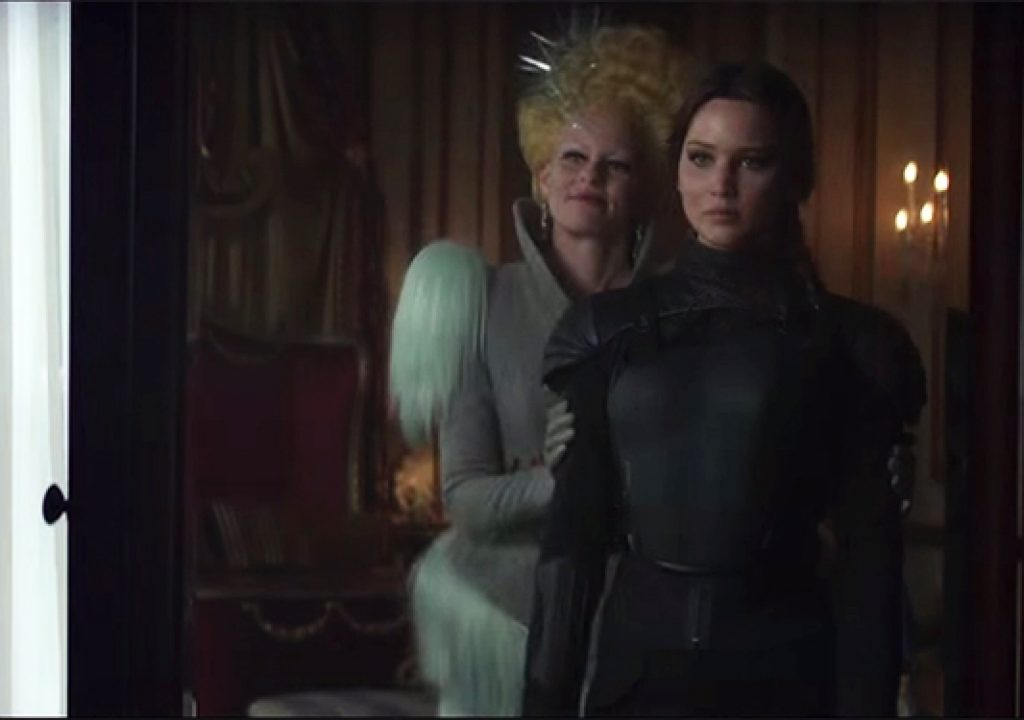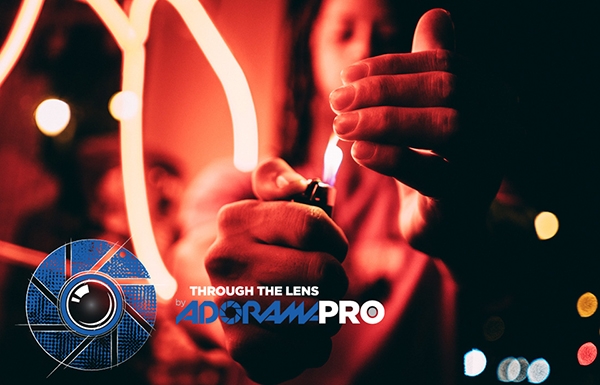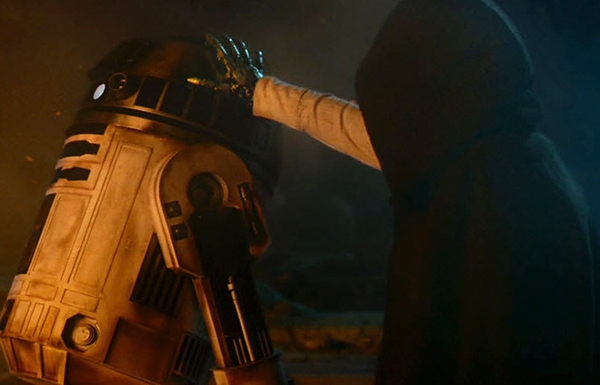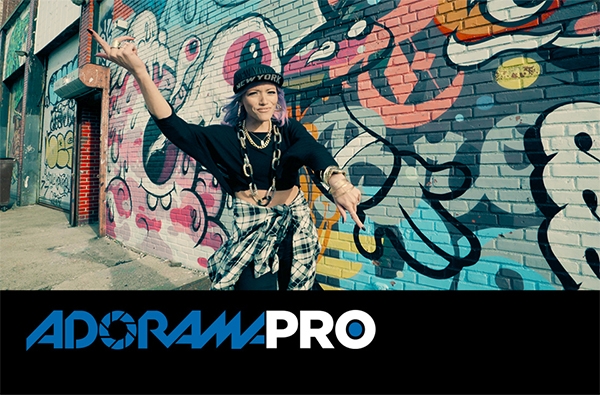Hot off the release of the final installment of the popular “Hunger Games” film series, we examine the cinematography of “Mockingjay, Part 2”
Suzanne Collins’ young adult series “The Hunger Games” easily transitioned from being a literary success into a very popular movie franchise. It has been so popular, in fact, that the concluding chapter in that series was split into two separate sequels filmed back to back. Ostensibly about the adventures of one Katniss Everdeen, it presented a dystopian reality where the have-nots are oppressed by a powerful elite who, in order to stifle protest and unrest, control the population with a televised competition forcing selected participants to fight each other to the death.
Jo Willems captures the outdoor, marble-like structures with cinematography reminiscent of
Leni Reifenstahl’s “Triumph of the Will” or some Stalin area propaganda film.

COLOR FORCE/LIONSGATE
Probably the most similar title – and arguably the most influential since The Hunger Games series has been accused of ripping this off – is both the Japanese novel and Kinji Fukasaku adaption “Battle Royale.” Like “Hunger Games,” it posits a fascistic society where the youth are rounded up via a lottery and sent to an isolated area to… well, you know the rest. Both variations also owe a debt of gratitude to William Golding’s “Lord of the Flies” as alliances are formed and collective survival plays a primary role. Yet, “The Hunger Games” takes its themes of individuality and anti-propaganda quite seriously whereas “Battle Royale” (and its sequel) is straight up satire (it also happens to be an excellent movie. One of the best of the early naughts, in my humble opinion).
Believe it or not “The Hunger Games” is an example of a long tradition of “Most Dangerous Game” inspired thrillers. Going all the way back to Richard Connell’s 1924 classic short story of the same name (about one big game hunter being tracked by another on an isolated, privately owned island), variations of the form have turned up in titles like Paul Bartel’s “Death Race 2000,” John Woo’s “Hard Target,” Peter Watkins’ “Punishment Park” and Ernest R. Dickerson’s “Surviving The Game.” Most specifically, the films “The 10th Victim” and the Arnold Schwarzenegger action vehicle “The Running Man” share “The Hunger Games’” DNA as both are built around the conceit that carnage will be televised to an audience thirsting for extreme thrills. It’s a modern and oftentimes futuristic take on the barbaric gladiator sports of ancient history; where the victor does not make off with a new championship belt or Heisman trophy. Instead they are awarded by simply staying alive.
Actors are placed either directly center or just off center within the frame. Thus emphasizing their
character’s surroundings.


COLOR FORCE/LIONSGATE
Creating a visual representation of the world and the characters inhabiting “The Hunger Games” novels poses its own set of unique challenges. Although its setting is post-apocalyptic (what prompted this apocalypse still remains unclear), territories are divided into districts and are carefully controlled by the ruling class. So this wouldn’t demand, say, a “Mad Max” inspired tableau featuring rampaging, feral marauders wreaking havoc with their retrofitted vehicles. In the films, costuming and set design are seemingly more inspired by prohibition era clothing, Stalin era agitprop, Leni Riefenstahl’s “Triumph of the Will” and just a wee bit of “Pricilla Queen of the Desert” by way of the prime time soap opera “Dynasty” when it comes to the supercilious look of the ruling class. The cinematography, however, has remained consistent throughout. Even though Director of Photography Jo Willems only took over camera duties from the first sequel onward.
Born in Belgium, Willems began his career shooting music videos for Cable, Supergrass, Tori Amos, Stereophonics and Prince (among others). During this period Willems struck up a friendship with filmmaker David Slade which resulted in a handful of short films and two feature collaborations, “Hard Candy” and “30 Days of Night.” Having also manned the camera for many commercials and the odd television pilot, Willems was finally tapped by director Francis Lawrence to take on “The Hunger Games: Catching Fire,” “Hunger Games: Mockingjay – Part 1” and finally “Hunger Games: Mockingjay – Part 2” which is will be theatrically released this Friday. There is a sense of scope and epic grandeur to Willems’ work. In terms of color palette, the oppressed are represented by shades of brown and grey whereas the privileged oppressors are given broader hues including blues and rich jewel tones. Above the ground everything is surrounded by white stone with sets seemingly constructed out of marble. Below the ground (within the subterranean hideout of the resistance) sets are also grey and brown while seemingly made up of concrete and industrial metal.


COLOR FORCE/LIONSGATE
In terms of framing, Willems places his actors either directly or slightly off center while showcasing the vast environment surrounding them. Even during the more intimate moments, an actor’s face might cover no more than a third of the frame thus making room for a glance of a prop to the side, a burning fire to another or simply as a means to present “negative space” much like this shot of Jennifer Lawrence and Elizabeth Banks staring at themselves in a mirror:

COLOR FORCE/LIONSGATE
It is as if Willems wants to achieve a sense of the bigger picture at work beyond the issues and personal setbacks each character face on a day-to-day basis. That epic scope I mentioned earlier that is fittingly reflective of the film’s narrative.
“Mockingjay – Part 2” was shot digitally with an Arri Alexa XT and Panavision Primo lenses. And thanks to extensive use of green screen technology, Willems was faced with having to match his camera movement to some very elaborate CGI designs. If the trailer is any indication, it looks like the effort was not in vain. Whether you are a fan of “The Hunger Games” franchise or not, one has to admit that visually “Mockingjay – Part 2” has the potential to be a beautiful movie.
This is what ultimately separates “The Hunger Games” series from its forebears. Films like “Running Man,” “Hard Target,” etc. either err on the side of total action, action-horror or outright satire ala “Battle Royale” and “Death Race 2000.” The one anomaly might be the previously mentioned “Punishment Park,” a rarely seen gem which shares a similar, serious socio-political stance. If you can find it, see it as soon as possible as it is one of the earliest examples of the “mockumentary” genre.
Produced in 1971, it takes place in yet another alternate reality but one that is closer to the zeitgeist of its time: Nixon is clamping down on Vietnam War protesters. And those who disobey will be given the option of either going to prison for 20 years or enduring the gauntlet that is Punishment Park: a 53 mile stretch of arid desert land. If you can make it to the end without being tracked down, hunted and arrested by the police and local militia then you’re free to go home. But there’s a catch (isn’t there always in flicks like these?). That reveal is reserved for the film’s grim ending. Shot as if it were a documentary airing on a BBC channel, “Punishment Park” was subjected to a great deal of controversy and censorship, something that would be unheard of with regard to today’s “Hunger Game” series.
“Punishment Park” would make for a great lead in to something like “Mockingjay – Part 1” and “Part 2” if not for the theme alone. For me, it’s just as fascinating to compare the hand held, found-footage style camera work of “Punishment Park” to the swooping, wide framed vistas captured in “The Hunger Games.” Although both films are diametrically opposite in terms of approach, both Peter Watkins (the film’s director who also acted as his own DP) and Jo Willems realize their visions in ways that are appropriate to a similar concept.
Check out more articles like this one on our ALC blog.
“The Hunger Games: Mockingjay — Part 2” will be released theatrically this Friday, November 20th. Directed by Francis Lawrence with cinematography by Jo Willems, the film stars Jennifer Lawrence, Josh Hutcherson, Liam Hemsworth, Donald Sutherland, Woody Harrelson, Elizabeth Banks, Stanley Tucci, Julianne Moore and Philip Seymour Hoffman.

Filmtools
Filmmakers go-to destination for pre-production, production & post production equipment!
Shop Now













